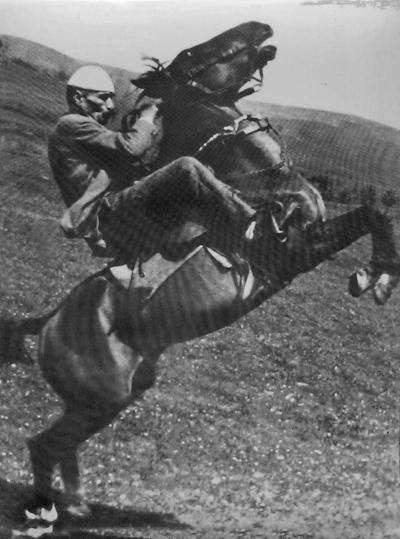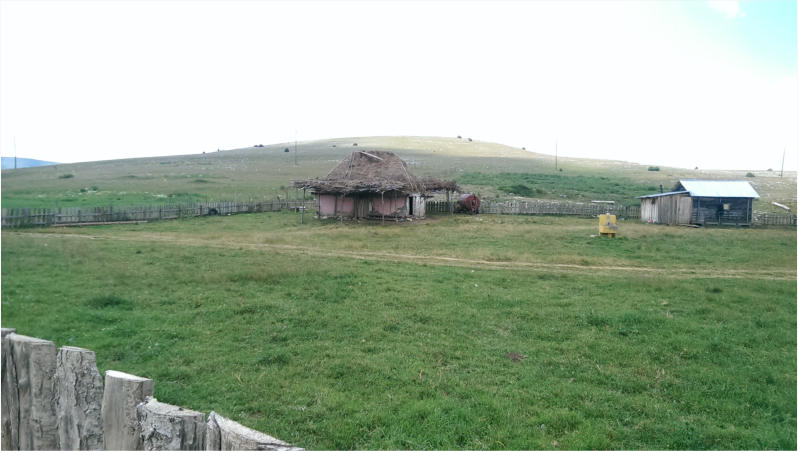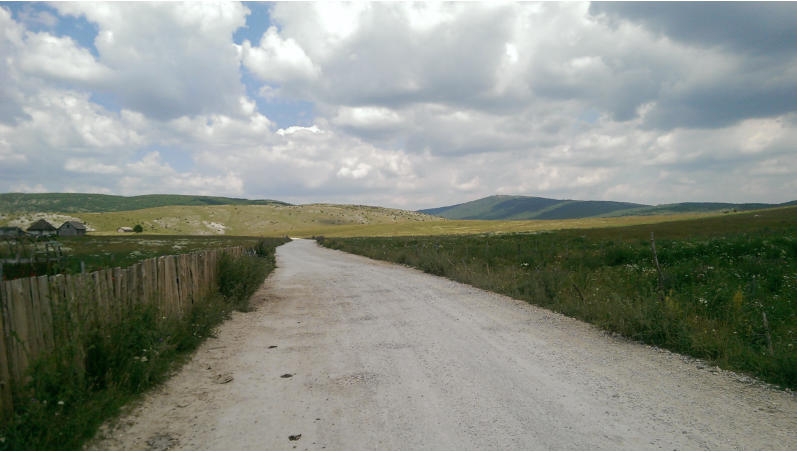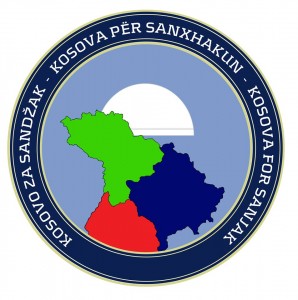Jovan Tomić (1869-1932) was a Ser bian writer and historian from Novi Varoš in the Zlatar region. As a librarian at the national library in Belgrade and as a member of the Serbian Academy of Science, he was the author of numerous works on the Ottoman period, including one book in French entitled “Les Albanais en Vieille-Serbie et dans le Sandjak de Novi-Bazar” (The Albanians of Old Serbia and the Sanjak of Novi Pazar), Paris, 1913. In this volume, written with more than a dash of Serbian nationalism, he endeavours explain away the presence of the Kosovo Albanians by calling them as ‘albanicised’ Serbs and is generally obsessed with Muslim Albanians. Nonetheless, there is a short chapter, included here, that is of interest for the history of the Albanian Catholic Kelmendi tribe during their period of exile on the desolate Peshter (Pešter) Plateau in the Sanjak of Novi Pazar, now in Serbia. There are still quite a number of families of Albanian origin in Peshter today, although few of them can still speak Albanian.Landscape on the Peshter Plateau near Novi Pazar in Serbia (photo: Robert Elsie, July 2015).
Hodaverdi Pasha won over all the mountain tribes and kept the Kelmendi locked in on three sides. To bar their route in the fourth direction, towards Gusinje [Gucia], which was inhabited by Muslims, the pasha built a fort. In 1700, the Kelmendi were thus cut off from the rest of the world. Nowhere could they go to get supplies and provisions. Particularly difficult for them was the lack of salt. Then there was a lack of bread and the only food that remained was the meat of their animals. However, the livestock was struck by an epidemic that was contagious for human beings, too, and it began to ravage the population. In their distress, the Kelmendi appealed to the pasha and offered to surrender.
The pasha accepted their offer and, in order to put a definitive end to all the problems this warlike tribe had caused, he decided to deport them. Only the Kelmendi of Selca were allowed to stay where they were. They had been much less unruly and one of their chieftains, who had converted to Islam, had been made Aga of Gusinje and had promised to convert all of his people. Aside from them, all the Kelmendi were deported to the Peshter Plateau not far from Novi Pazar. The pasha thereby killed two birds with one stone. The Shkodra region was relieved of the constant pillaging it had suffered, and all of the deserted countryside of Peshter, the worthless property of Mahmud Begovich, could thereby be settled.

The Kelmendi were thus deported and spent seven years in Peshter. The countryside was good for raising livestock and as the Kelmendi had many animals, they no doubt found more favourable living conditions there than in the mountains. However, they were discontent. They longed for their mountain homeland and for their freedom. The Turkish authorities, for their part. were putting ever increasing pressure on them to convert to Islam. The remaining Kelmendi still living in the mountains and the other mountain tribes, their neighbours, became more and more aware of the problems they were suffering as a result of the deportation of their brethren to Peshter. The Muslims mounted increasing attacks on all the mountain people who were not of their faith and who could no longer defend themselves. The Peshter Kelmendi thus received appeals for them to return to their mountain homeland and were assured of assistance from all sides. They were incited by the Catholic missionaries among them who watched over their faith and were worried by the endeavours of the Turkish authorities to convert them. In 1707, as a result of pressure from various sides, the Peshter Kelmendi decided to leave their new home and return to their old one.
Their return was fraught with difficulties. Having learned of their plans, the Turks barred the routes that the Kelmendi would be taking. The Kelmendi, for their part, were aware that they would be jeopardising the lives of the hostages they had been forced to hand over in Ipek [Peja]. They had to take their wives and children with them, to transport all their essential belongings, to drive their herds in front of them, and to abandon their crops that were almost ready for harvest, but all these difficulties were outweighed by the longing for their homeland.A traditional hut on the Peshter Plateau near Novi Pazar in Serbia (photo: Robert Elsie, July 2015).
As a herding community, the Kelmendi settled all over the Peshter Plateau. In 1707, just before their departure, there were 274 homes spread in all directions. This scattered settlement pattern hindered them from gathering everyone together when they decided to escape in July of that year. Only half of them, 174 homes, managed to assemble. The others were prevented from joining them by a detachment of Turkish cavalry, later supported by numerous infantrymen. The men of Kelmendi, however, managed to capture the Turkish chieftain of the region and the four members of his escort. They tied them up and took them with them with the intention of exchanging them for their hostages in Ipek.
On 5 July, half of the Peshter Kelmendi thus set off back to the mountains. Of the 1,362 individuals in the caravan, only 400 were men in arms. The rest were women and children. The number of fighters they had was insufficient for them to break through the Turkish lines along the roads they were to take. For this reason, the women took to arms, too – 300 of them. The column made its way to Rožaje [Rozhaja] and Plav [Plava] in the following order: the men in the vanguard, then the women, then the ca. 30,000 sheep and about 4,000 head of cattle and horses, and then the children with the few belongings they had with them.

On the first day, they faced a thousand Turks, whom they managed to fight off, and spent the night at Rugovo [Rugova] between Rožaje and Plav. The next day, the caravan set off again but encountered more Turks than on the first day – about 5,000. Since such a mass of people could not defend itself in the open, they chose to retire to a better position and wait to see if the Turks intended to withdraw or attack them. They remained there, face to face, for several days, each side fortifying its position. Finally, the Turks decided to attack and the Kelmendi were waiting for them. The women left the children behind and ran to join the men. In the fighting that ensured, one of the Kelmendi sliced off the head of a Turkish chieftain. The assault was thus repulsed. Indeed the Turks were chased back into their original position. Aside from the wounded, there were 65 deaths, of which 21 were on the Kelmendi side. Fourteen Turks were buried alive. From that time on, the Turks did not dare to take the offensive. Seeing that they could not stop the Kelmendi from returning to the mountains, they offered to let them go their way in peace on condition that they release the chieftain of Peshter, his four companions and other prisoners. The Kelmendi agreed to this on condition that the Turks return their hostages in Ipek, and compensate them for the loss of livestock that had scattered because of the fighting and commotion, and that they could not find. The Turks accepted these conditions without hesitation and let the Kelmendi go their way.
The Kelmendi were welcomed joyfully by their compatriots in Selca and by the other mountain tribes, and were given food and livestock. All promised that they would fight the Turks together if the latter should attack. Though everything was going well for the Kelmendi who returned to their homeland, things went badly for those who had been left behind. Reduced in number, they were now being increasingly forced by the Turks to convert to Islam, and they were no longer strong enough to resist. Abandoned to their own devices and deprived of their missionaries, who had returned to the mountains with the rest, they slowly began to abandon their faith, one by one, under pressure from the Turks. Those who remained faithful to their religion appealed for help from their compatriots and relatives in the mountains.
But the Kelmendi in the mountains were not left in peace. The Turks gave them no respite and attacked them without warning in June 1711. However, the Kelmendi stood their ground and cut them to pieces. A total of 127 Turks paid with their lives for an enterprise that cost the Kelmendi five lives, all of whom were leading men.
New appeals for help arrived from Peshter, for the time had now come that the Kelmendi who remained behind would either have to be rescued by their compatriots or would have to convert to Islam. Having learned of their desperate plight, the Archbishop of Antivari [Bar], Vincenc Zmajević, encouraged the Kelmendi to come to the aid of their compatriots in Peshter. The moment was favourable in view of their recent victory over the Turks. Obeying the appeal of the archbishop, the Kelmendi set off swiftly and marched back to Peshter on routes held by the Turks, and brought back fifty families who, although on the point of conversion, had remained faithful to their old religion. For the Kelmendi warriors, who were used to pillaging and marauding, this would normally have been a time for booty, but they took none because they did not want to burden themselves down on the way back or lose their relatives to the Turks.

We know how many families and individuals returned to the mountains in 1707 and how many of them remained on the Peshter Plateau.We also know how many Kelmendi families were brought back to their homeland in 1711. All that remained in Peshter was a small minority who had converted to Islam. These people could now live their lives without being harassed or bothered. They did not wish to return to the mountains and the Kelmendi who had gone to Peshter to save the Catholics from destruction showed no more interest in those who had converted. This small group of Kelmendi came to constitute the first Albanian population in the Sanjak. With time, these people increased in size and became a focus for the spread of Islam in a region that had been entirely Serb.
Extract from: Iovan Tomitch, Les Albanais en Vieille-Serbie et dans le Sandjak de Novi-Bazar (Paris: Hachette, 1913), p. 70-75. Translated from the French by Robert Elsie.
